500 years ago, Hernan Cortés landed in Mexico. An exploration project to find the ships of the Spanish Conquistador expedition is underway in the Gulf of Mexico.
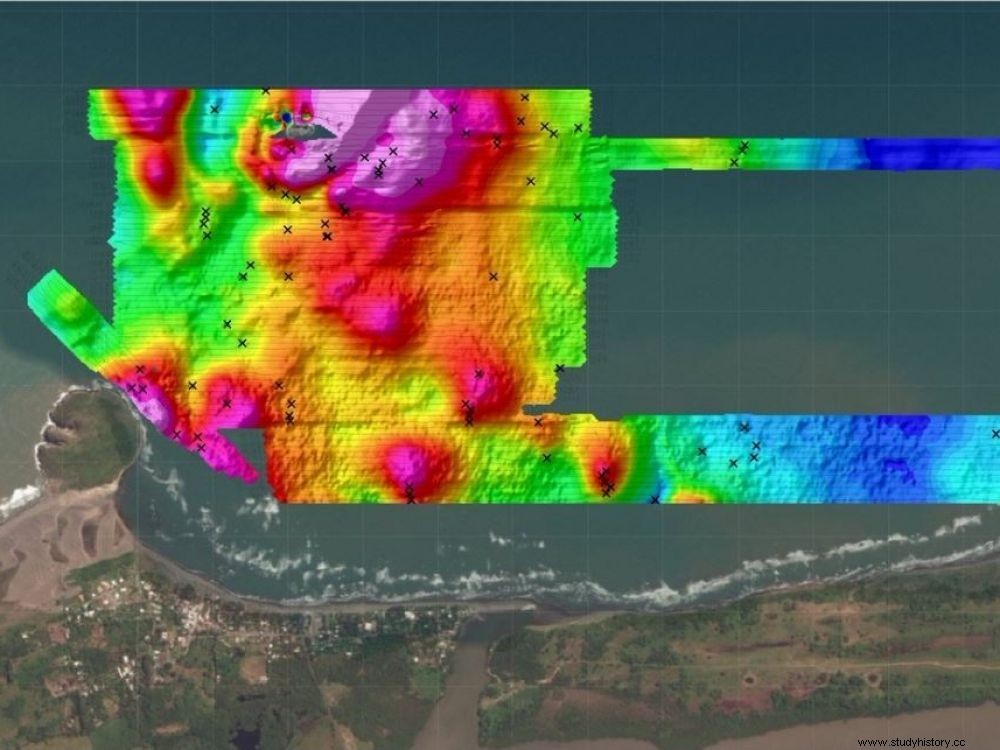
Anomalies reported by magnetometers off Playa Villa Rica, Mexico, which may correspond to the scuttling site of Cortès' fleet (1519).
WRECKS. While some dive into the turquoise waters of the Gulf of Mexico to admire the seabed, Roberto Junco Sanchez prefers to track down wrecks there. And not just any. The researcher from the National Institute of Archeology and History (Inah) of Mexico, new director of the department of underwater archeology, is on the trail of legendary ships. The ten ships — out of the 11 caravels (read the box below) and other brigantines of an armada sent to the Americas — scuttled by the conquistador Hernan Cortés himself off Actopan, in 1519. A definitive act to nip in the bud any hope of return among the men he had brought back with him from Cuba, as recorded in the chronicles of Bernard Diaz del Castillo in the XVI th century. Hernan Cortés, an ambitious and ruthless man, had to face two serious mutinies emanating from disgruntled companions and soldiers.
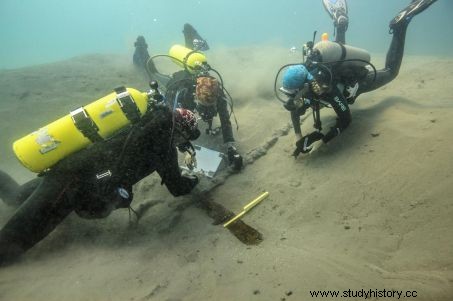
500 years after Cortés landed in Mexico, an international team of divers searches for the remains of the Spanish conqueror's fleet. © Jonathan Kingston
Metal anomalies detected
At the head of an international team, in which collaborate the American archaeologists Christopher Horrel (Meadows Center, University of Texas) and Frederick Anselmann (University of Miami), and Canadian and Spanish specialists, Roberto Junco Sanchez will begin a new campaign of exploration during the summer of 2019, according to the Mexican daily El Comercio of February 5. Contacted by Sciences et Avenir , the archaeologist confirms that he will carry out these investigations off Playa Villa Rica, 75 km north of Veracruz. It is there, in fact, that history places the episode of the scuttling from which only one ship escaped. “We will continue to survey the magnetic anomalies identified last year in the 10 km 2 zone. which we have circumscribed and in which we believe Cortés anchored, he explains. To do this, the team used a side-scan sonar and a magnetometer that can measure variations in the Earth's magnetic field, and therefore detect the presence of metallic anomalies. More than 60 irregularities — possible ferrous materials — have been located. “We are quite confident and will make announcements soon “, smiles the expert. An anchor and fragments of wood possibly dating back to the time of the Spanish conquest have already been collected.
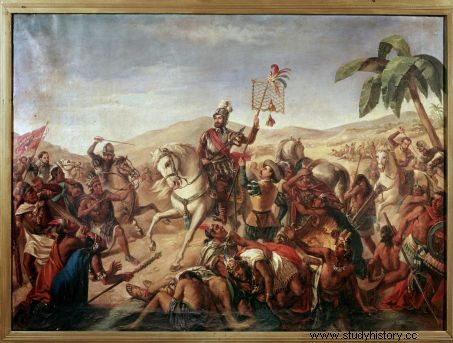
Hernan Cortes (1485-1547), during the battle of Otumba against the Aztecs (July 1520). Anonymous work, Army Museum, Toledo, Spain. © Leemage /AFP
The location of the lost fleet would be a major event
“Nothing is known about these ships in terms of naval architecture, except that they were small vessels weighing around a hundred tons ”, says Roberto Junco Sanchez. These ships, which arrived in Mexico on April 23, 1519, just twenty-seven years after the discovery of America by Christopher Columbus (1492), carried 550 infantry, a few sailors and horsemen, 200 Indians from Cuba as well as 16 mares and horses. , without forgetting an arsenal of firearms, crossbows, swords and spears.
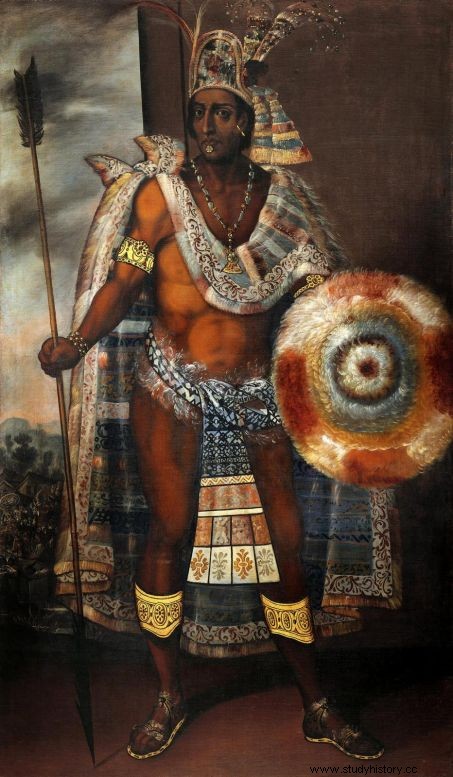
Portrait of the Aztec Emperor Moctezuma II (1466-1520). Anonymous painting. Florence, Museo degli Argenti. © Leemage /AFP
And it was with this contingent, say the stories of the time, that Hernan Cortés managed to conquer the Aztec empire by capturing their sovereign Moctezuma II while seizing his capital Tenochtitlan (future Mexico City). Especially with the - invaluable - help of several enemy tribes of the Aztecs that he had managed to rally to his cause. A violent conquest in which he was also involuntarily supported by the microbes and zoonoses that the Spaniards had introduced with them and which contributed to decimate an entire continent in a few decades.
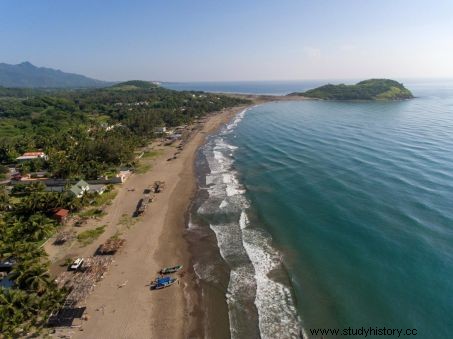
The exploration area is located off Playa Villa Roca, in the Veracruz region. © Jonathan Kingston
Cortés' fleet might not rest alone in Mexican waters. In 1520, barely a year after landing, 16 of the 18 ships sent to Mexico by the governor of Cuba to arrest Cortés — who had set out to conquer Mexico (New Spain) without his approval — were also sunk by their commander, Panfilo de Narvaez. So that's almost 26 boats that could be off Playa Villa Rica!
The 11
th
ship…
Of his voluntarily sunk fleet, the Spanish conqueror Hernan Cortés spared only one building, the eleventh. And this so that he can bring back to the sovereign of Spain, sponsor of the conquest, the quint of the king (the fifth of gold) to gain his royal favors. In other words, a treasure composed essentially of precious objects “of admirable craftsmanship ” offered by the Aztec Emperor Moctezuma II shortly before his arrest. The latter thus hoped - in vain - to save his people by offering gold to Cortés so that he would go away. The complete inventory of these treasures is known to us since it is detailed in the appendix of the first Carta de relacion sent by Cortés to Charles V, King of Castile and Holy Roman Emperor, July 10, 1519.
